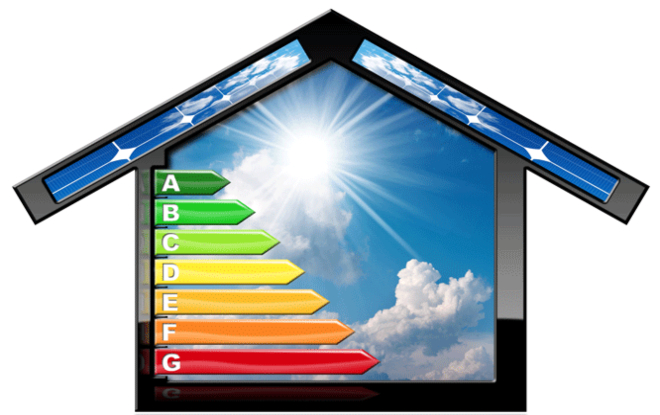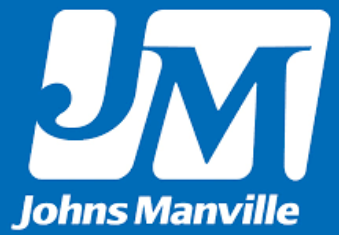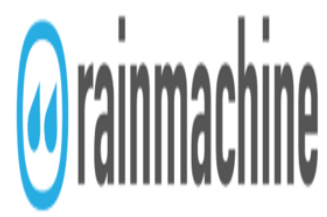WHAT IS BUILDING PERFORMANCE INSTITUTE (BPI)? © 2024 Building Performance Institute, Inc.
Building Performance Institute, Inc., or BPI, was founded in 1993.
BPI has become the nation's premier standards development and credentialing organization for residential energy auditing and upgrade work.
BPI is a 501(c)(3) non-profit organization and it plays an important role in the Clean Energy Revolution:

- BPI mission is to provide the benefits of home performance to the nation’s homeowners through best practice standards, credentials and quality assurance services for the home performance and weatherization industry.
- BPI is the cornerstone for the residential building performance industry, making all homes energy efficient, comfortable, safe and durable.
- BPI is accredited by the American National Standards Institute, Inc. (ANSI) as a developer of American National Standards and as a certifying body for personnel credentials. BPI develops the technical standards for home energy audits and for energy efficiency, health, and safety improvements.
Cool Remodeling YouTube® Video Library
© 2024 Copyright Owned By The Video Publisher
HOME PERFORMANCE WITH ENERGY STAR® © 2024 U.S. Environmental Protection Agency.
BPI promotes an integrated approach to how the home’s or building’s systems can work together to provide the most comfortable and efficient living space (Energy Star®).

Cool Remodeling YouTube® Video Library
© 2024 Copyright Owned By The Video Publisher
WHAT IS HOME PERFORMANCE WITH ENERGY STAR®? © 2024 U.S. Environmental Protection Agency.
The Home Performance with EnergyStar® entails a comprehensive evaluation of the home in terms of energy efficiency as outlined below:
- Whole-house energy assessment.
- A network of qualified contractors to improve home performance.
- Verification inspection.
- Independent review of contractors' work.

Cool Remodeling YouTube® Video Library
© 2024 Copyright Owned By The Video Publisher
WHAT IS TITLE 24? © 2024 State of California.
Many homeowners are not aware of the latest energy efficiency requirements, known as Title 24, regarding various areas of home remodeling.
If you are planning to remodel your house, or to begin a room addition project, or even changing certain appliance, you should be aware of energy compliance regulations for the current year.

Cool Remodeling YouTube® Video Library
© 2024 Copyright Owned By The Video Publisher
TITLE 24 COMPLIANCE © 2024 State of California.
Title 24
Compliance can be complex. In some cases, alterations may be exempt, while in
others they may need to comply with several sections of the Building Energy Efficiency
Standards known as
Title 24.
In most cases, if a remodeling project requires a building permit, it is very likely, that a Certificate Of Compliance and Residential Mandatory Measures Summary will have to be submitted with the building permit documentation and included in the building plans.
The best way to ensure that your remodeling project meets with
Title
24 Requirements is to engage an energy improvement contractor who is experienced
with building permits documentation and Title 24 Compliance.

Cool Remodeling YouTube® Video Library
© 2024 Copyright Owned By The Video Publisher
TITLE 24 COMPLIANCE REQUIREMENTS FOR HOMEOWNERS © 2024 State of California
Alterations that may trigger Title 24 Compliance Requirements include any changes that impact the energy performance of the home such as room additions, remodels and equipment upgrades.
- ROOF UPGRADES
Full or partial roof upgrades must meet efficiency requirements specified in Title 24 Section 110.8 - WINDOWS AND DOORS
Windows, doors and skylights must meet U-Factor efficiency requirements specified in Title 24 Section 110.6 - INSULATION
Any insulation changes or additions must meet R-value requirements specified in Title 24 Section 110.8 - ROOM ADDITIONS
Any change that increases the existing volume must meet energy efficiency requirements specified in Title 24 Section 150.0

- HVAC
Any upgrades to heating, ventilation, and air-conditioning must meet efficiency requirements specified in Title 24 Section 110.2 - LIGHTING
Indoor/outdoor lighting installed for additions must meet efficiency requirements specified in Title 24 Section 110.9 - POOL AND SPA
Any upgrades to pool and spa equipment must meet efficiency requirements specified in Title 24 Section 110.4
Cool Remodeling YouTube® Video Library
© 2024 Copyright Owned By The Video Publisher
WHAT IS A BPI AUDIT? © 2024 Building Performance Institute, Inc.
A BPI Audit Process is designed to ensure that your remodeling project meets with Title 24 Compliance Requirements.
This process may entail several elements outlined below:
- Calibrated Blower Door Test.
- Total Home Performance Evaluation.
- HERS Test.
- Thermal Imaging Test.

Cool Remodeling YouTube® Video Library
© 2024 Copyright Owned By The Video Publisher
BPI AUDIT AREAS © 2024 Building Performance Institute, Inc.
BPI Audit entails several tests designed to ensure compliance with Title 24 requirements for homeowners. This audit must be conducted by a BPI Certified Professional who will be able to provide you with the Certificate Of The Title 24 Compliance. One of the main elements of the BPI Audit is conducting a Total Home Performance Evaluation, which may include many different areas as illustrated below.
The Home Energy Evaluation will include all areas of the house:
- Roof, attic and attic fan.
- Windows and doors.
- Air-conditioning, heating and ventilation.
- Water heating – house and swimming pool.
- Insulation and air sealing – walls, attic and foundation.
- Lighting and appliances.
- Swimming pool pump.
- Renewable options.

Cool Remodeling YouTube® Video Library
© 2024 Copyright Owned By The Video Publisher
WHAT IS HERS® INDEX? © 2024 Residential Energy Services Network.
According to Residential Energy Services Network or RESNET®, the HERS® Index is the industry standard by which a home's energy efficiency is measured.
- The HERS® or Home Energy Rating System was developed by RESNET® and is the nationally recognized system for inspecting and calculating a home's energy performance.
- Certified RESNET® Home Energy Raters conduct inspections to verify a home's energy performance and determine what improvements can be made to increase it.


Cool Remodeling YouTube® Video Library
© 2024 Copyright Owned By The Video Publisher
WHAT IS HERS® TEST? © 2024 Residential Energy Services Network.
BPI Audit may also include a HERS® Test designed to ensure compliance with Title 24 requirements for homeowners. This test must also be conducted by a BPI Certified Professional who will be able to provide you with the Certificate of the Title 24 Compliance.
In most cases, if your remodeling project requires a building permit, a Title 24 Compliance Report should be submitted with the building permit. The best method to ensure a home improvement project meets Title 24 Standards is to work with an energy improvement contractor who is familiar with building permit documentation and Title 24 compliance.

Cool Remodeling YouTube® Video Library
© 2024 Copyright Owned By The Video Publisher
INTERPRETATION OF THE HERS® TEST SCORE© 2024 Residential Energy Services Network.
| HERS® Index Score |
Understanding The HERS® Score |
|---|---|
| 150 | This house is a 50% less energy efficient than a standard new home! It could be a significant financial drain on the bank account and to the environment in general. A house like this has high energy bills and will be hot in the summer and cold in the winter. |
| 140 | This score puts this house near the very top of the HERS® Index! In terms of energy efficiency, this home is performing 40% worse than a home adhering to the basic building code requirements. This is one of the major reasons for its high energy costs, less than ideal comfort level. |
| 130 | This is the typical resale home score. This house will be at least 30% less energy efficient than it should be. Therefore, the smart way to buy a home is to determine its HERS® Index score before you decide to buy and take advantage of the Energy Efficient Mortgage. |
| 120 | This home is 20% less energy efficient than a standard new home. Watch out for the noticeably draftier rooms, the fact that utility bills are higher than a newly constructed home and that the house is either too hot in summer or too cold in winter. |
| 110 | This home is in line with the current industry standards for energy conservation. However, there's still a lot of room for improvement, and that can translate directly into an improved quality of life and savings on your home energy bills. |
| 100 | This home meets the current industry standards for home energy efficiency. But there are still many energy-saving measures that you could implement to make your home much more energy efficient, resulting in a safer home environment, and lower utility bills. |
| 90 | This home is 40% more energy efficient than an average resale home and 10% more energy efficient than a standard new home, which is awarded a score of 100 and used as the base against which all other homes are measured. |
| 80 | This house might be performing 20% more efficiently than a standard new home, although homes can be built much more energy efficiently. Money invested into a more energy efficient home will help increase its value while improving its comfort level. |
| 70 | This home is 30% more energy efficient than homes built according to current building code requirements. However, it is still possible to lower the HERS Index score and to add value to the home and improve its comfort level. |
| 60 | This house has made good progress towards optimizing its energy performance! Not only is this good news from a financial point of view, it's also good news for the environment. Did you know that 16% of greenhouse gases, generated in the U.S., come from homes? |
| 50 | This home is 50% more energy efficient than a standard new home and 80% more efficient that the average resale home, which already puts it in a better bracket than a standard new home. However, there are still many improvements that can be made. |
| 40 | This is a very good score indeed! The builder has done a lot of the right things to make this home more energy efficient, like using energy efficient lighting systems and installing efficient heating and cooling equipment. |
| 30 | This home is 70% more energy efficient than a standard new home. It has been designed and built with energy efficiency in mind, resulting in a home that is environmentally friendly, enjoys a high comfort level and benefits from low energy costs. |
| 20 | This house is well on its way to becoming a Zero Energy Home, which is environmentally friendly and produces as much energy as it consumes. |
| 10 | Tremendous effort has gone into making this home very energy efficient. The homeowners will enjoy watching their utility bills decrease while the comfort level of their home increases. The next step would be to eliminate energy costs altogether by having the house produce its own energy. |
| 0 |
This home is a Net Zero Energy Home. This means that this home produces as
much energy through renewable resources, such as solar panels, as it consumes.
Only a Net Zero Energy Home can score 0 on the RESNET HERS® Index. Among the
advantages of a Zero Energy Home are:
|
Cool Remodeling YouTube® Video Library
© 2024 Copyright Owned By The Video Publisher
BPI AUDIT TESTING FOR LEAKS IN YOUR HOUSE © 2024 Building Performance Institute, Inc.
One important area of the BPI Audit entails checking your home for leaks. Such leaks may occur anywhere in the house, starting with the foundation and floor area, through the exterior walls, the attic and the roof. These leaks may cause substantial loss of heat during the cold winter time, when you are trying to keep the house warm, and loss in cool air, when you are trying to keep the house cool in hot summer time.
Cool Remodeling YouTube® Video Library
© 2024 Copyright Owned By The Video Publisher
WHAT IS THERMAL IMAGING?© 2024 Building Performance Institute, Inc.
Thermal Imaging, also called Thermography, is a method of using infrared light which is made visible to the human eye.
Infrared light is electromagnetic radiation with longer wavelengths than visible light.
The highly specialized science of thermal imaging allows humans to see and interpret heat energy that could not otherwise be seen with the naked eye.
To oversimplify, thermal imaging technology creates images to represent temperature variations.

Cool Remodeling YouTube® Video Library
© 2024 Copyright Owned By The Video Publisher
BPI AUDIT THERMAL CAMERA TESTING FOR LEAKS IN YOUR HOUSE© 2024 Building Performance Institute, Inc.
Another important area of the BPI Audit entails checking your home for leaks by using a Thermal Camera to detect leaks in your home which can’t be easily detected.
Such leaks may occur anywhere in the house, starting with the foundation and floor area, through the exterior walls, the attic and the roof.
These leaks may cause substantial loss of heat during the cold winter time, when you are trying to keep the house warm, and loss in cool air, when you are trying to keep the house cool in hot summer time.

Cool Remodeling YouTube® Video Library
© 2024 Copyright Owned By The Video Publisher
THE RESULTS OF A BPI AUDIT© 2024 Building Performance Institute, Inc.
As a result of a comprehensive BPI Audit, you will be able to better understand the current level of your home energy efficiency.
This audit will also identify the potential of improving your home energy efficiency by introducing specific energy-efficient products.
Once you know what needs to be done, the rest will be up to you.

Cool Remodeling YouTube® Video Library
© 2024 Copyright Owned By The Video Publisher
FINANCING OPTIONS FOR YOUR HOME ENERGY EFFICIENCY IMPROVEMENT PROJECTS
Once you decide to move forward with any type of a home energy improvement project, we will introduce you to the most suitable Financing Options in accordance with your specific needs. These options may include:
- No interest and no payment financing* for one year.
- Low payment options* with low interest rates.
- Secured* and unsecured financing loans.
* Subject to OAC (on approved credit).
Contact Us Today To Find Out Which Financing Option Will Be The Best One For You.
MEET SOLLY THE SEAL
Just in case you did not meet him yet, we would like to introduce you to Solly The Seal who is a very important member of the Cool Remodeling TM management team.
Solly’s main job is to approve all home energy efficiency products and provide his Seal of Approval.


WE ONLY WORK WITH ORGANIZATIONS AND BRANDS APPROVED BY SOLLY THE SEAL
































































































